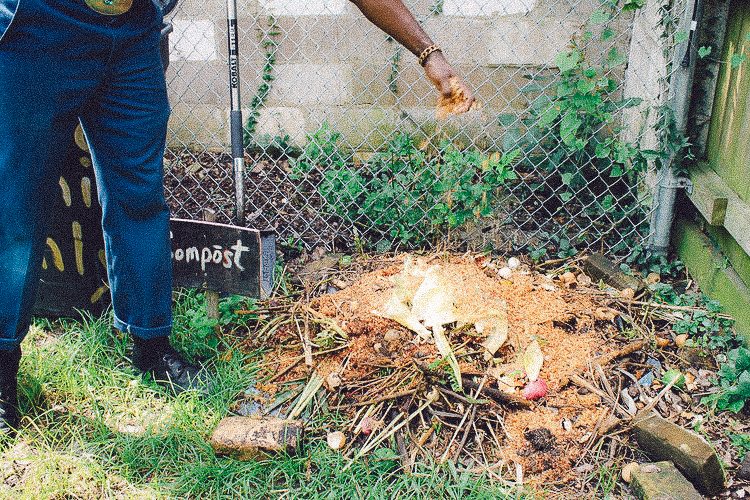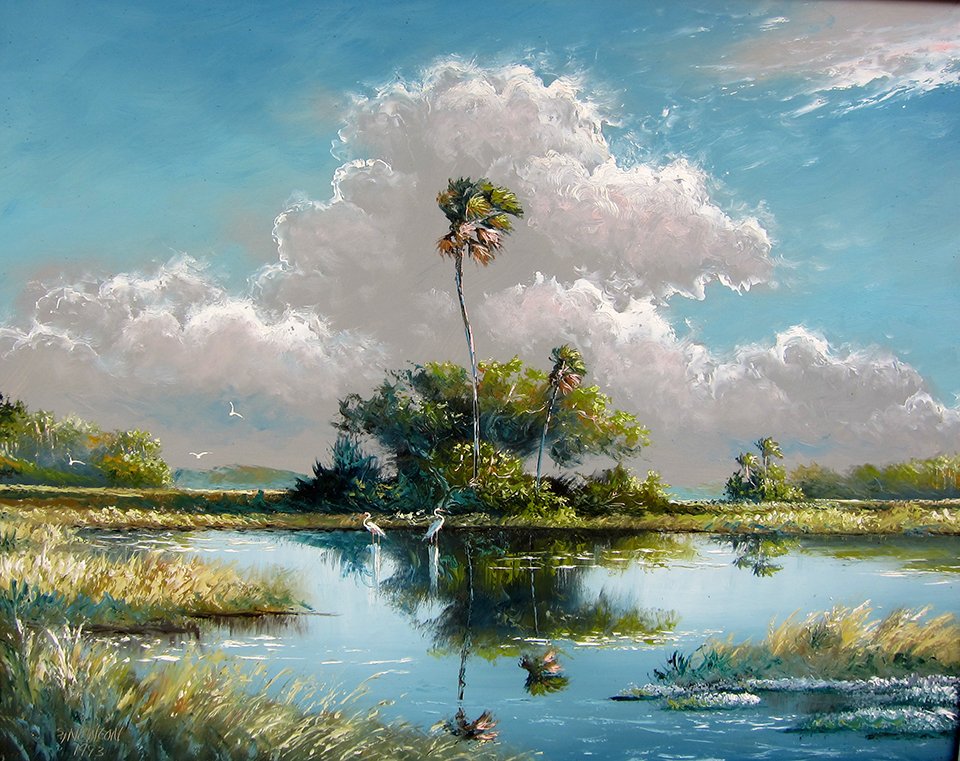Black History in Nature: Vol. 1
Like many Black people we celebrate Black history all day, every day. But for the month of February, we’re sharing 28 histories of Black innovation and creativity in agriculture, gardening, and beyond on our Instagram. If you aren’t following us on Instagram (@collectionofcollections), you can keep up with the journey right here. We’ll be posting every 7 days until the end of February.
Rahn shows us his organic matter-filled compost pile.
February 1: Composting
George Washington Carver contributed more than just the use of peanuts to agriculture. Dr. Carver promoted the practice of using compost to reintroduce nutrients and add organic matter to the soil. You can also learn more about composting from Rahn in his feature on blackpeoplewithplants.com. Rahn not only teaches composting through the Edible Schoolyard but incorporates the practice in his own backyard as seen in the image above.
A portrait of Betty Reid Soskin by Aaron Wojack for Riposte Magazine.
February 2: Betty Reid Soskin
We were first introduced to Betty Reid Soskin in the pages of Riposte Magazine. A pioneer + entrepreneur, Betty is the oldest National Park Ranger in the U. S. She works at Rosie the Riveter/World War II Home Front National Historical Park. Betty was the only Black person at the park design planning meetings. Every Tuesday + Thursday Betty shares her personal experience of being a Black woman working during WWII. A story much different from most shared in the woman-centric National Historical Park. In her Riposte feature Betty states: “If we don’t know where we started we have no idea of how we got to where we are. Here, I can just tell my truth and they give me a theatre. They give me a microphone and a soapbox and I get to talk and I get to share that history.”
A glass bottle tree at Pearl Fryar’s Topiary Garden.
February 3: Black Gardens + Yards
As a way to protect the home glass bottle trees were placed in the yard or garden. It was believed colorful glass bottles attracted evil spirits and trapped them until the sunlight destroyed them. Traditionally, bottles were hung upside down on Crepe Myrtles to capture malevolent spirits. It was also believed bottle trees brought rain, luck, and made trees bloom. Bottle trees can still be found among the foliage and vegetation of Black gardens + yards, particularly in the Deep South.
The photo is a grand re-opening ad for Delphinium Garden Club member, Dora Atkins' family flower shop. Dora managed the shop from 1923 - 1977.
February 4: Delphinium Garden Club
In March 1938, the Delphinium Garden Club was founded in Indianapolis, Indiana. Fourteen women started the club and held flower shows, garden lectures, and social events for 35 years. The club's mission was to direct social, material, and aesthetic reform in their communities through botanical education. Through the years the club remained true to its mission of developing a genuine appreciation for the healing power of nature's bounty and beauty in a perplexed world. The 1950s saw a rise in Black garden clubs in Indianapolis. Delphinium Garden Club was one of the most prominent voices in the city's Black garden movement.
February 5: Highwaymen
From the 1950s to 1980's a group of Black Floridian artists known as the Highwaymen sold their work out of the trunks of their cars. Often painting from memory of natural Florida they grew up in, their palettes included vibrant colors of beaches, native trees, sunsets, and moonlit rivers. The group comprised of men and one woman painted as an alternative to the backbreaking work of picking and packing citrus fruit - a common job among Black Americans during the 1950s. Using oil-based paints and Upson board, the Highwaymen painted in their shaded backyards or carports. They sold directly to customers all along A1A and U.S. 1 on Florida's east coast. In 2016, 26 members were inducted in the Florida Hall of Fame.
February 5: Henry Blair
In 1807, Henry Blair was born a free man. He's the 2nd Black American to be issued a U.S. patent for two inventions - a corn planter and a cotton planter. Both inventions increased efficiency on the farm. The corn planter had a department that dropped seeds to the ground while a rake followed to cover them with soil. The horse-drawn cotton planter with two shovel-like attachments divided the soil. Behind it, a cylinder-shaped wheel dropped seeds in the freshly turned soil.
Photograph from Darker than Green’s review of the anthology.
February 7: Black Writers in Nature
In 2009, poet and editor Camille T. Dungy dismayed by the non-existence of Black writers in nature anthologies edited “Black Nature: Four Centuries of African American Nature Poetry”. A selection of 180 poems from 93 poets fill the pages with unique perspectives from Phillis Wheatley, Gwendolyn Brooks, Robert Hayden, and Douglas Kearney. “Black Nature” broadens our concept of nature poetry and African American poetics. The cover image by Black photographer Gordon Parks depicts a young boy with a Junebug on a string in Fort Scott, KS.







